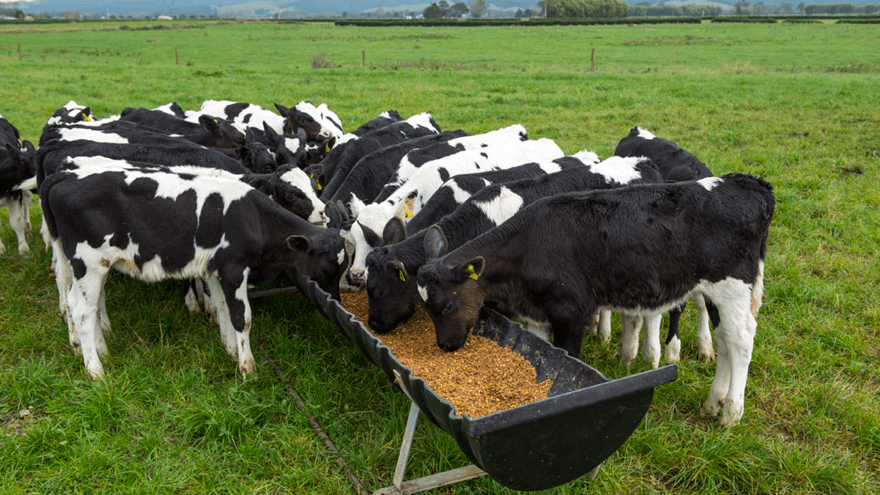
Energy and protein requirements for calves
Achieving target liveweights requires high energy and protein feed that is fast acting, to support bone and muscle development in young calves. Ensuring that both are delivered in abundance, and in the most digestible form, enables a calf to easily utilise the feed and convert it into liveweight.
Energy is essential for both maintenance and growth. The energy requirements for growth increases with age and liveweight. Younger calves have a lower maintenance requirement due to their body size. As calves grow, so too does their maintenance requirement and they will require more energy to achieve the same daily liveweight gain.
High energy calf meal delivering 13 Megajoules of Metabolisable Energy (MJME) per kg Dry Matter (DM) is an ideal starter for young calves with a restricted rumen capacity. When delivered as pelletised feed, it is energy dense, taking up little room while containing all the necessary components of a calf meal.
High energy should come from grains such as maize, wheat and barley. By-products can also have high energy, however, this could be derived from fat and give a false reading of what is available to the calf. Dietary fat excess to requirements is undesirable causing a satiety effect that may limit growth. The type of fat is also important, unprotected fats have a negative effect on fibre digestion. It is starch that is needed to grow rumen papillae, the finger-like protrusions lining the rumen and used to absorb nutrients. Fat does not have this effect.
Protein acts as the building blocks for the muscle development in a calf. However, the type of protein makes all the difference. Each amino acid, the building blocks of protein, has its own function. The right amino acids within a meal allows a calf to utilise protein more effectively resulting in increased growing rates. These protein sources come from good quality vegetable proteins such as soya bean meal, canola, cottonseed meal and peas.
When considering which level of protein to feed, consider how quickly calves can grow on a higher protein feed. Muir (2009)¹, demonstrated that calves on a higher protein meal (20 percent) grew faster than those on a lower protein meal (16 percent). The aim of the trial was to see what proportion of calves could be weaned off milk at six weeks of age at 65 kg.
When calves were fed 20 percent meal, 47.4 percent of the calves were at the target liveweight ready to be weaned off milk, versus 21.2 percent of the calves fed 16 percent. The slower the calves grow, the longer they require meal, costing more to feed.
For more information on protein and energy requirements for calves, contact your local PGG Wrightson Technical Field Representative.
¹Muir, P.D. (2009). Profitable calf rearing project.



